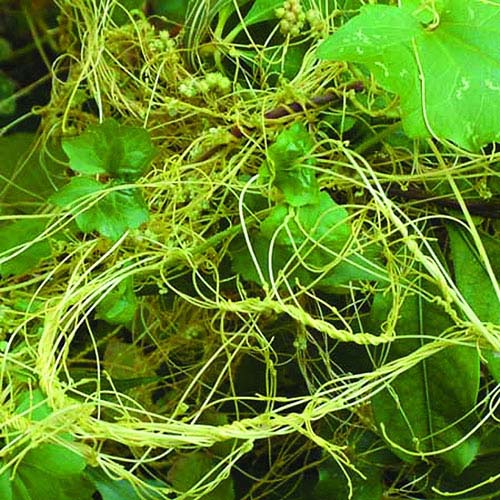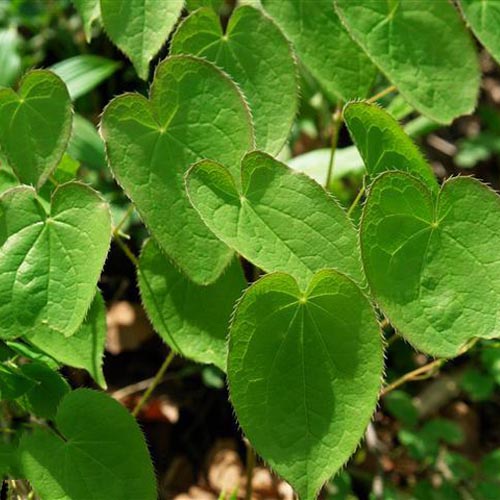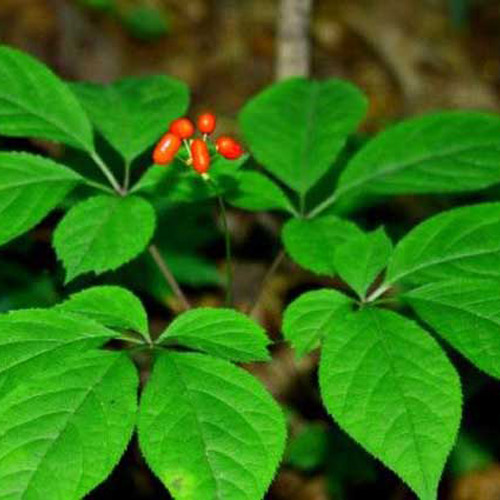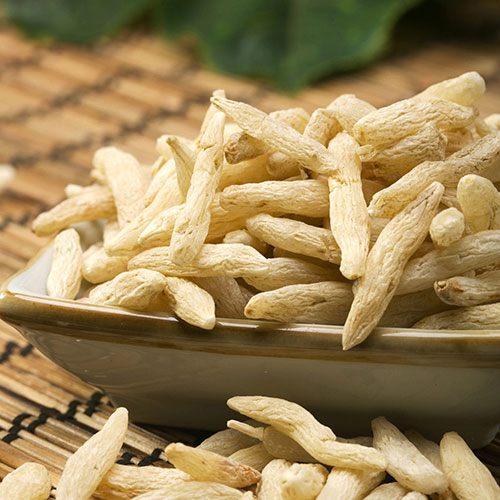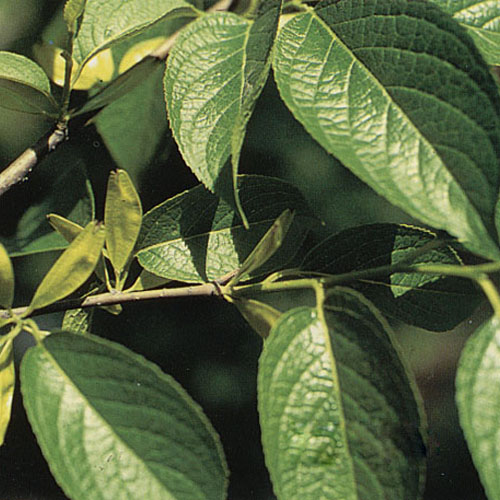- Chinese Name Tu Si Zi 菟丝子
- Latin Name Cuscuta chinensis Lam.
- Other Names Semen Cuscutae, Chinese Dodder Seeds
- Used Part Seed
- Specification Powdered Extract
Cuscuta Seed Extract Powder
Description
In Traditional Chinese Medicine, Cuscuta Seed (Cuscuta chinensis) is known for powerful effects on the male constitution.
It is widely used to remedy sexual problems like impotency, nocturnal emission, premature ejaculation, and low sperm count. It helps nourishing the kidneys and boosting energy levels.
Cuscuta seed, also known as Dodder seed or Tu Si Zi in mandarin, has long been considered a fabulous mild tonic used in Chinese herbal remedies. Just as its name implies, it comes from a parasitic plant that only survives by absorbing the essence from its host. Since ancient herbalists found no root from dodder, they thought it had some kind of magic power. It may be for this reason that it was listed as one of the superior herbs in the “Shen Nong’s Herbal Classic.”
Being an excellent tonic for kidney, liver, and spleen, traditionally dodder seeds, alone or in combination with other ingredients, can assist the treatment of various diseases, in particular impotence, nocturnal emission, alopecia areata, habitual abortion, visual deterioration, frequent urination, melasma, lower back pain caused by kidney deficiency, chyluria, infertility, fetal irritability, and more. It also has a long history of use as a longevity herb.
TCM Tradition
Taste & Property Acrid, Sweet, Neutral
Organ Meridians Liver, Kidney
TCM Functions
• Strengthens Yang, nourishes Yin, astringes Jing and urine and benefits the marrow
– Kidney Yang Deficiency with impotence, nocturnal emissions, premature ejaculation, tinnitus, urinary frequency, sore painful back and vaginal discharge
• Tonifies the Kidneys and Liver and improves vision
– Deficient Liver and Kidney Yin, Yang and Jing with dizziness, tinnitus, blurred vision or spots before the eyes
• Benefits the Kidneys and Spleen and stops (astringes) diarrhea
– Diarrhea, loose stools and anorexia from Spleen and Kidney Deficiency
• Calms the fetus
– Habitual or threatened miscarriage
Science Research
Chemical Constituents[2]
Chemical constituents in Semen Cuscutae include biological alkaloids, anthraquinone, coumarin, flavones, glycoside sterols, terpene, tannic acid and others. Compounds that contain flavones include quercetin, astragalin, and hyperin, with the total flavone amount being approximately 3.0% in the raw herb[2-3]. Compounds that include sterols include: cholesterol, campesterol, beta-sitosterol, stigmasterol and beta-amyrin[4]. The amino acid content is approximately 0.076%, and the total polysaccharide content is 8.5%-9.2% in the raw herb[3,5]. Microelements identified so far in this herb are calcium (Ca), magnesium (Mg), iron (Fe), manganese (Mn), and copper (Cu).[6]
Pharmacological Actions
1. Chronic Prostatitis
Clinical studies
A formula of Semen Cuscutae, Rhizoma Dioscoreae Hypoglaucae, Rhizoma Dioscoreae, Fructus Alpiniae Oxyphyllae, Rhizoma Alismatis, Fructus Corni, and Herba Patriniae was used once per day to treat 53 cases of chronic prostatitis, for periods ranging from one to three months. The overall effective rate was reported to be 90.6%.[1]
2. Improve Sperm Abnormality
Clinical studies
Semen Cuscutae was used together with Herba Cistanches, Fructus Lycii, Radix Polgoni Multiflori, Radix Rehmanniae Praeparata and Fructus Schisandrae to treat 105 cases of sperm abnormality. In this review paper, the type of sperm abnormality was not defined. The patients took the medicine either once a day or every other day. One month was regarded as one treatment period. After three treatment periods, 31 cases demonstrated complete recovery, 65 cases showed some extent of recovery while 11 cases experienced no change.[7]
3. Gynecological Effects
Clinical studies
Effective in treating threatened abortion: Radix Dipsaci, Colla Corii Asini, Radix Codonopsis Pilosulae, Rhizoma Atractylodis Macrocephalae and Semen Cuscutae were used to treat 110 cases of threatened abortion. The patients took the medicine once a day for 10 days, and the overall effective rate was found to be 96.36% [9]
Effects on small uteruses (lnfantile uterus): In a study of 46 cases of infantile uteruses, patients were treated with a compound formula containing Semen Cuscutae , Radix Morindae Officinalis, Rhizoma Curculiginis, Herba Epimedii, Cervus elaphus, Radix Rehmanniae Praeparata and Radix Polgoni Multiflori. Starting from the 5th day of the menstrual cycle, the medication was taken, together with 1mg diethylstilbestrol, once a day for 20 days. Following treatment, 37 cases showed complete recovery while nine cases demonstrated improvement.[8]
Animal studies
Gavage feeding 25g/kg Semen Cuscutae water extract to mice once a day for ten days was able to promote keratinization of vaginal tract epithelium and increase the weight of the uterus.[7]
4. Improve Chranic Bronchits
Clinical studies
Effective in treating threatened abortion: Radix Dipsaci, Colla Corii Asini, Radix Codonopsis Pilosulae, Rhizoma Atractylodis Macrocephalae and Semen Cuscutae were used to treat 110 cases of threatened abortion. The patients took the medicine once a day for 10 days, and the overall effective rate was found to be 96.36% [9]
Effects on small uteruses (lnfantile uterus). In a study of 46 cases of infantile uteruses, patients were treated with a compound formula containing Semen Cuscutae , Radix Morindae Officinalis, Rhizoma Curculiginis, Herba Epimedii, Cervus elaphus, Radix Rehmanniae Praeparata and Radix Polgoni Multiflori. Starting from the 5th day of the menstrual cycle, the medication was taken, together with 1mg diethylstilbestrol, once a day for 20 days. Following treatment, 37 cases showed complete recovery while nine cases demonstrated improvement.[8]
5. Delay Cataract Formation
Animal studies
Delay cataract formation in rats:
Rats on a galactose diet were given by gavage 4g/kg/day of a Semen Cuscutae water extract for 30 consecutive days. Results showed that Semen Cuscutae could delay the formation of cataracts in rats with a reported overall effective rate of 33.3%14. It was suggested that Semen Cuscutae did this by reducing the activity of aldose reductase and other enzymes that are responsible for galactose induced cataract formation and by enhancing the activities of sorbitol dehydrogenase, hexokinase, and glucose-6-phosphate dehydrogenase in the rat eye lens.[11]
6. Yang Strengthening Effects
Animal studies
Improve the overall wellness of yang deficient mice:
After mice were rendered yang deficient by hydrocorticoid treatment, mice were gavage fed with a 5g/kg Semen Cuscutae decoction once a day for 7 days. It was observed that their body, kidney and thymus gland weight increased as well as increasing their white cell count, red cell count, hemoglobin content and superoxide dismutase (SOD) activity. Male mice gavage fed with 5g/kg Semen Cuscutae decoction once a day for 10 consecutive days showed prolonged swimming and hypoxia survival times. When fruit flies were fed with 0.5, 1.0 and 2.0% Semen Cuscutae water extracts for 10 days, their copulation frequency, within 11 minutes, increased. Their copulation rate increased by 47.49%, 65.52% and 78.86%, respectively.[12]
7. Effects on Na+/K+-ATPase activity
Animal studies
Mice gavage fed with a 6g/kg Semen Cuscutae decoction once a day for 10 days showed increase in Na+/K+-ATPase activity.[13]
8. Effect on Heart Rate and Blood Pressure
Animal studies
Modulate heart rate and blood pressure: Decoction and tincture preparations of Semen Cuscutae were shown to affect contractility in an in vitro toad heart model. Heart rate was shown to increase with the decoction preparation but was reduced with the tincture. Intravenous injection of a 0.1g/kg Semen Cuscutae decoction to anaesthetized dogs showed reduction in their blood pressure.[14]
9. Effects on the Endocrine System
Animal studies
Modulate the function of the anterior pituitary-hypothalamus-ovary axis:
When female rats were fed by gavage with 10g/kg water extract of Semen Cuscutae twice a day for five consecutive days, the weights of their anterior pituitary glands, ovaries and uterus were increased. Although no change in plasma LH levels was noted, the numbers of hCG/LH receptors increased such that the Ka value was smaller when compared to the control group. [15]
Increase LRH sensitivity in ovariectomized rats: Ovariectomized rats were fed by gavage with 10g/kg water extract of Semen Cuscutae twice a day for five days. On day six, following anesthesia, the animals were i.v. injected with d-C-LRH (luteinizing releasing hormone). Results showed that Semen Cuscutae was able to further promote luteinizing hormone (LH) secretion induced by LRH. Plasma LH levels of Semen Cuscutae treated rats reached its highest peak 90 minutes after d-C-LRH injection with an average percentage increase of 241.58%. This study demonstrated that the stimulatory effects of Semen Cuscutae on yellow body (corus luteum) production along the hypothalamus-pituitary-ovary axis were not due to its direct stimulation on the pituitary; but thought to be due to Semen Cuscutae’s ability to increase ovary receptor sites sensitive towards LRH and LH, respectively.[15]
10. Anti-aging Effects
Animal studies
Mulberry leaves, soaked with a 20% Semen Cuscutae decoction, were fed to silkworms three times a day. Results showed that Semen Cuscutae could prolong the larval stage of the worms, as well as their lifespan.[16]
11. Anti-cancer Effects
Cell culture studies
At concentrations of 300mg/ml and 3000mg/ml, Semen Cuscutae water extracts were able to inhibit DNA synthesis in Ehrlich ascite carcinoma cells.[17]
12. Anti-bacterial Effects
Cell culture studies
Decoction of Semen Cuscutae has been shown to have in vitro inhibitory effects on Staphylococcus, Shigella flexneri, and Bacillus typhosus.[4]
Toxicity
Acute toxicity: The LD50 of ethanol extracts of Semen Cuscutae injected intradermally (i.d.) into mice was found to be 2.465g/kg[14]
Subchronic toxicity: Rats gavage fed with 30-40g/kg of Semen Cuscutae water extract did not appear to have any intoxification symptoms. Furthermore, when rats were administered with 4.15g/kg Semen Cuscutae water extract or tincture, once a day for 70 days by gavage feed, no developmental abnormality and/or pathological change was noted.[14]
References
1. Lui Dai Quan, ed. Chinese Medicine. Shanghai Scientific and Technical Publishers, 2000-6.
2 Jin Xiao, ed. Study of flavone content in Semen Cuscutae. China Journal of Chinese Materia Medica 1992;17(5):292.*
3. Guo Cheng, et al. Research on the quality of Semen Cuscutae. China Journal of Chinese Materia Medica 1991;16(10):581.*
4. Jilin Province Chinese Medicine Research Institute. Botanicals in Chang Bai Shan. Chang Chun, Ji Lin People’s Publisher, China 1982:935.*
5. Ye Pin, et al. Comparison between big Semen Cuscutae and Semen Cuscutae. Proprietary Chinese Medicine1992;14(3):36.*
6. Zhao Chungui, et al. Spectrometric analyses of microelements contained in 6 Chinese herbs that soothe fetus. China Journal of Chinese Materia Medica1990;15(5):43.*
7. Zhou Xiong, ed. To study the effect of Semen Cuscustae decoct on sperm abnormality, Journal of Traditional Chinese Medicine and Chinese Materia Meidca of Jilin 1992;(5):10.*
8. Zhu Jinfeng, et al. Experimental and clinical studies on the effect of Shou Tai Wan and additives on threatened abortion. Journal of Integrated Traditional and Western Medicine1987;7(7):407.*
9. Yan Linmao, ed. Integrating Chinese and western medicine to treat Infantile uterus, Herbal Journal of Traditional Chinese Medicine1992;14(4):40.*
10. Yang Tao, et al. Effect of Semen Cuscustae on galactose induced cataract in rat. Journal of Beijing Medical University 1991;23(2):97.*
11. 7(6):731Yang Tao, et al. Effects of four Chinese herbs on the activities of enzymes related to galactose-induced cataract formation. Journal of Biological Chemistry (China)1991;7(6):731.*
12. Mi Hemin, ed. Comparison study on the bone support and yang strengthening effects of three types of Semen Cuscustae, Chinese Traditional and Herbal Drugs 1991;22(12):547.*
13. Ding Anrong, et al. Effects of six tonifying medicines on membrane Na+/ K+-ATPase activity in mice. Proprietary Chinese Medicine 1990;12(9):28.*
14. Jiangsu New Medical College, Pharmacopoeia of Chinese medicine, Shanghai People Hygiene Publisher, Shanghai, China 1997;2006.*
15. Li Bingru, et al. Effects of kidney tonifying medicine on the function of anterior pituitary-hypothalamus-sex gland axis, Journal of Traditional Chinese Medicine1984;25(7):543.*
16. Xiang Pin, et al. Experimental observation of the anti-aging effects of seven Chinese medicines. Liaoning Journal of Traditional Chinese Medicine 1982;6(3):44.
17. Duan Xiumei, et al. Researches on Semen Cuscutae botanicals. Research and Development of Chinese medicine in Chang Bai Shan 1992;1(2):53.

